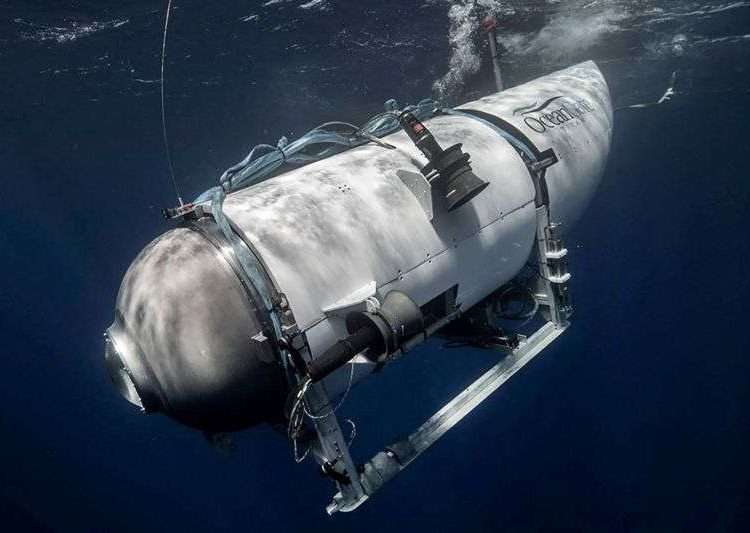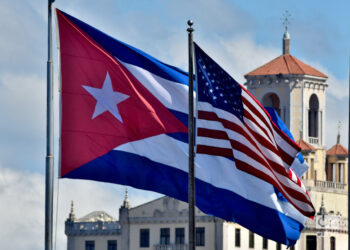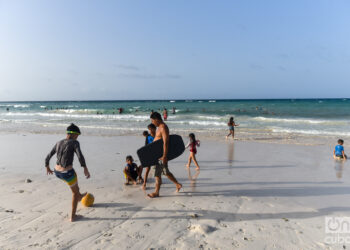A week after the disappearance of the Titan submersible, the headlines do not stop. During the 96 hours of oxygen available to the five crew members, the hope that they would continue to be alive prompted an intensive rescue operation led from the United States and that deployed means from several countries and state-of-the-art resources.
On June 22, after finding confirmed debris, the U.S. Coast Guard announced that the capsule had imploded; probably on Sunday the 18th. It had lost all communication at a depth of about 3,500 meters, 1 hour and 45 minutes after embarking on a trip to the most famous wreck in history: that of the Titanic, an experience that has been offered since 2021 in exchange for a quarter of a million dollars per person.
Now there are new testimonies and statements about the safety failures of the submersible and the scant regulation of the sector, as well as the risks of extreme tourism; meanwhile, the threat of lawsuits looms over OceanGate, the company that created Titan and whose CEO, Stockton Rush, was aboard the fateful expedition.
- Who was on the Titan and why were they there?
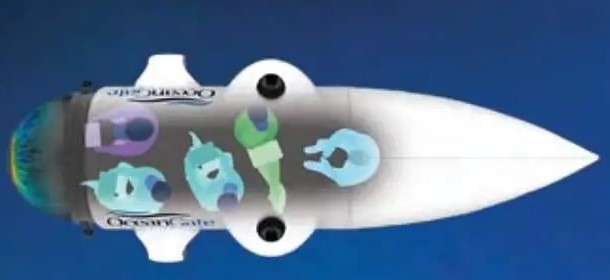
The five crew members traveling in the small submersible with a carpeted floor instead of seats and barely enough space for more than one crew member at a time to stretch out their legs were: Stockton Rush, founder and CEO of OceanGate Expeditions, the ship’s operator; Hamish Harding, British businessman and explorer; Shahzada Dawood, a British businessman of Pakistani origin and his 19-year-old son, Suleman; and Paul-Henri Nargeolet, a French maritime expert who had visited the wreck of the Titanic more than thirty-five times. OceanGate announced in a statement that “we have sadly lost them all.”

Stockton Rush
(San Francisco, 1962). He was known as an innovator and explorer. In recent days, interviews have circulated in which he shows off his temerity; however, those close to him affirm that safety was a priority for him and that he was very methodical in managing risks.
According to the website for OceanGate, a company he founded in 2009, Rush began his career in 1981 as the world’s youngest jet transport pilot, aged 19. In 1984 he began working as a flight test engineer on F-15 fighter jets for McDonnell Douglas. The last two decades he decided to focus on the other extreme: the depths, much less explored and controllable than the heights and even space.
“I would like to be remembered as an innovator. I think it was General [Douglas] MacArthur who said, ‘You will be remembered by the rules you break,’” Rush said. “And I have broken some to do this. I think I have broken them with logic and followed by good engineering behind.… Carbon fiber and titanium…there is a rule that says that you should not do it,” he added regarding the materials used to build the submersible, which he conceived as “an elevator” that would make it possible to see and study the Titanic before it was devoured by bacteria.
“The ocean is taking it from us, and we need to document it before it all disappears,” Rush told the AP in 2021.
His wife, Wendy Weil Rush, is the descendant of two victims of the legendary shipwreck.
Hamish Harding
(London, 1964). Degree in Natural Sciences and Chemical Engineering from the University of Cambridge. He had an estimated heritage of more than 1.25 billion euros and was a member of one of the most select clubs in the world: the Explorers Club, to which James Cameron, director of the mega-production Titanic (1997), belongs. He visited space in 2022 aboard the New Shepard, a rocket that made a ten-minute flight in what would be the fifth successful manned mission for Jeff Bezos’ company. He went several times to the South Pole and descended into the Mariana Trench, the deepest part of the ocean on record. It was the longest mission carried out at such a depth (4 hours and 15 minutes) with the greatest distance traveled (4,600 meters).
Harding founded Action Aviation, an international aircraft sales company based in Dubai, United Arab Emirates. From July 9-11, 2019, Harding was mission director and crew pilot for One More Orbit, which set a world speed record for the fastest circumnavigation of Earth by aircraft over both geographic poles.
Paul-Henri Nargeolet
(Chamonix, 1946). Diver and marine archaeologist. He led the group of divers who cleared the mines in Cherbourg (northwestern France), before becoming a submarine pilot for the French Navy. As a marine archaeologist, he excavated several shipwrecks. In 1986 he became head of deep-sea intervention submarines of the French Research Institute for the Exploitation of the Sea (Ifremer), a year after a team led by the American Robert Ballard, in collaboration with Ifremer, had found those of the Titanic.
He descended to the ruins of the famous shipwreck for the first time in 1987 aboard the French submarine Nautile. It would only be the first of dozens of dives that would consolidate him as one of the greatest experts on the ship, to the point of being known as Mr. Titanic.
He became director of underwater research for E/M Group and RMS Titanic, and 5,000 artifacts were recovered under his supervision. He led the most advanced immersion on the famous wreck in 2010, using high-resolution sonar and 3D optical imaging of the bow, stern and debris.
Shahzada Dawood
(Rawalpindi, 1975). Well-known British nationalized Pakistani businessman. Shahzada studied law at Buckingham University and earned a master’s degree in Global Textile Marketing from Philadelphia University (now Thomas Jefferson University).
He was 48 years old and vice president of the Engro conglomerate, based in Karachi, southern Pakistan. Engro had investments in various business sectors: energy, agriculture, petrochemicals and telecommunications.
From 1996 to 2023, Dawood was a trustee of the family foundation The Dawood Foundation (TDF), focused on education. TDF coordinated the Hussain Dawood Pledge, a private donation to fight COVID-19 in Pakistan. It had focused on efforts to provide mental health support for people affected by COVID-19 in the country. He was on the board of trustees of the California-based SETI Institute, which searches for extraterrestrial intelligence.
Different media have referred to his interest in the investigation of natural habitats and renewable energies. He was a “photography enthusiast,” particularly wildlife and natural habitats. He was passionate about the Titanic since he was a child.
Suleman Dawood
(Lahore, 2004). Son of Shahzada Dawood. He was 19 years old. His aunt Azmer, the sister of his father, told NBC that he was terrified and did not want to embark on the expedition. But Sunday the 18th was Fathers’ Day, and he wanted to please his father by accompanying him on an exploration he was very excited about. His family describes him as a “big fan of science fiction literature and learning new things.” He liked the Rubik’s cube and playing volleyball. Shortly before embarking, he had graduated from the ACS International School in Cobham.
https://youtu.be/UCwg2h7i4Ac
- What happened?
U.S. authorities in charge of the rescue efforts announced, after finding remains of the small ship, that it suffered a “catastrophic implosion,” or the immediate and violent collapse of a body on itself.
The tail cone and other remains of the missing sub were found by a remote-controlled vehicle from the Canadian ship Horizon Arctic. They were about 500 meters from the bow of the Titanic, which lies 3,800 meters deep in the Atlantic Ocean.
Titan was destroyed in a millisecond, its carbon fiber and titanium structure, perhaps due to a gradual weakening of the structure, did not resist the extreme pressure at that depth as in its previous forays.
“That’s 350 times the pressure on land,” said Tom Maddox, CEO of Underwater Forensic Investigators, who participated in an expedition to the wreckage of the Titanic in 2005. At that depth, the water column exerts a pressure of approximately 3,500 tons per square meter.
“Under these conditions, any small loss could cause an immediate implosion,” Maddox continued. In the depths of the ruins of the Titanic, the pressure was so high that the implosion would have occurred in a millisecond, therefore, unpredictable by the crew. A painless and instant death.
“It happens at a speed of 800 kilometers per hour,” Aileen Marty, a former Navy officer and FIU professor told CNN. “Under these conditions, the human brain doesn’t even have time to realize what is happening,” she stressed. “The sub violently collapsed in on itself before the people inside it could even know there was a problem. They didn’t know they were going to die,” Marty said. They didn’t get to see the Titanic either.
The U.S. Navy detected sounds “consistent with an implosion” shortly after the submersible lost contact on Sunday, June 18; but the information was only made public on Thursday the 22nd.
- Why is it attracting so much interest from the media and the public?
It is a dramatic event that concentrates many of what are defined as newsworthiness criteria, a concept from the world of sociology and the media, and which of course is not subject to absolute rules. However, it is possible to identify some patterns in this case.
The scientific dissemination platform Geopop identified 8 reasons for interest, in addition to the fact that the event was related to the Titanic, whose shipwreck in 1912 still attracts the attention of scientists, historians and the public: 1) particularity: the fact that it is a unique, novel, very particular event; 2) drama: compromised human lives and strong curiosity in the face of the unknown of what had happened; 3) urgency: it was not a tragic event that happened and ended immediately, but a true countdown for days; 4) empathy: millions of remote witnesses to the events have imaginarily placed themselves inside the sealed capsule, in rarefied conditions, a reduced space, in the midst of solitude, absolute darkness, and extreme abyssal temperatures, almost 4,000 meters deep. Panic, anguish, progressive lack of oxygen (which would later be known that they did not experience when the implosion was confirmed); 5) personalization: the crew members had a name, a face and a story, data that gave them importance, individuality and made the drama tangible; 6) conflict, conflicting opinions. Sympathies and antipathies. More or less successful comparisons with other dramatic episodes with their own characteristics; 7) emotionality: positions whose intensity is given by the fact that they are more guided by emotions than by rationality; 8) challenge: saving the lives of the crew against the clock and in an extremely hostile and unattainable environment.
- What red flags surrounded these expeditions?
In addition to taking tourists and experts to the wreck of the Titanic, the company claims that the submersible was used for educational purposes, studies and inspections, research and data collection, production of films and other content, as well as large-scale hardware and software testing at great ocean depths.
In 2018, dozens of industry experts wrote a letter warning that the Titan’s design could have “catastrophic” results. The same year an OceanGate employee raised concerns about the safety of the vessel and how the company was testing it. He was fired. The ship never received DNV-GL certification, a gold standard industry certification from the Norwegian foundation Det Norske Verita.
In 2019, OceanGate defended the decision not to certify the submersible, arguing that marine and air accidents were not caused mostly by mechanical failure, but by operator error.
Since 2021 dozens of people have visited the Titanic wreck on Titan; however, more than once the incursions have had to be canceled or postponed due to malfunctions, including loss of communication; something that some crew members confirmed happened to them for a period of time once they reached great depths.
David Pogue, a CBS correspondent who participated in one of the dives, said that, on the other hand, it should not be forgotten that Rush was a “Princeton-graduate aerospace engineer” who designed and built airplanes and other submersibles. The Titan itself, he added, had “descended to the seabed [13] times without mishap.”
Mike Reiss, a sitcom writer who worked on The Simpsons and who also made the trip last year, said the protocol included signing “a disclaimer that lists one after the other ways you could die on the trip. They mention death three times on the first page, so you never get it out of your mind.”
- What’s next?
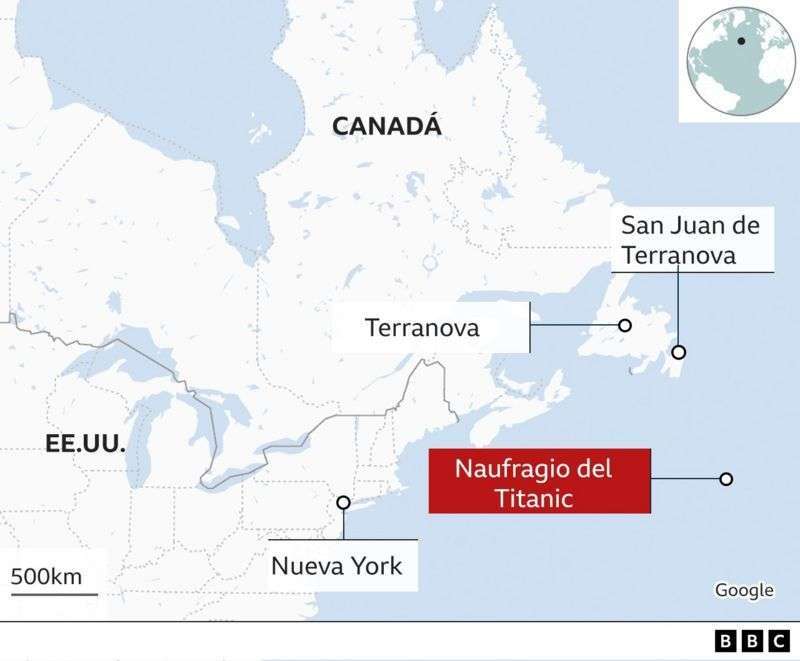
As for the remains of the crew, Rear Admiral John Mauger, of the U.S. Coast Guard, declared that he did not have “a final answer regarding the possibility of recovering the members of the expedition, for the moment the searches will continue, but the environment on the seafloor is incredibly unforgiving,” Mauger said.
“Now the remote-controlled vehicles will remain on the scene and continue to collect information,” Mauger explained. “Time will be needed to determine a specific time sequence of events in this complex Titan failure case,” he concluded.
Guillermo Söhnlein, co-founder of OceanGate, defended the company from criticism regarding Titan’s safety. Söhnlein told the BBC that those who have criticized the safety of the submersible, including film director James Cameron, are not fully informed.
Meanwhile, OceanGate announced that it was ceasing indefinitely, while an international investigation is carried out focusing on the safety conditions of the imploded vessel a week ago.

